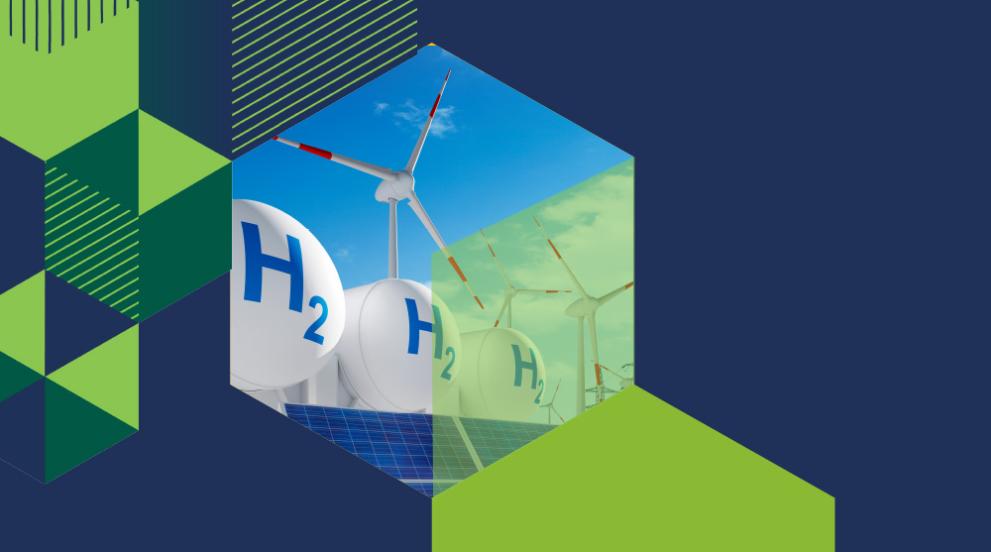
Today, the Commission has set out new plans to stimulate and support investment in sustainable hydrogen production through a European Hydrogen Bank (EHB). Hydrogen can make a major contribution to the EU’s ambitions to end imports of Russian fossil fuels in the next few years and to achieve climate-neutrality by 2050. This initiative is aimed at accelerating investment and bridging the investment gap for the EU to reach its ambitious REPowerEU targets of producing domestically 10 million tonnes (mt) of renewable hydrogen by 2030, coupled with 10 mt of imports.
As the first final investment decisions were only taken last year and the vast majority of projects are still in the planning stage, the EHB will help address the initial financial challenges in order to create an emerging renewable hydrogen market. It will also have an international dimension to facilitate renewable hydrogen imports to the EU
Today’s Communication on the European Hydrogen Bank (COM(2023)156) accompanies the Commission’s legislative proposal for a Net-Zero Industry Act, which aims to boost EU manufacturing of clean technologies.
Kadri Simson, Commissioner for Energy, said:
As part of the Net-Zero Industry Act, the Commission today adopted a plan to set up the European Hydrogen Bank. The European Union is a powerhouse for research and innovation, and we want to keep it that way! Renewable hydrogen will also play an important role in the EU’s transition to climate neutrality by 2050. The European Hydrogen Bank will establish a full hydrogen value chain in the EU,alongside the Net-Zero Industry Act. Those industries that make early decisions to redirect or focus on cleantech deployment will benefit.
The Communication sets out the four pillars of the EHB, which should be operational by the end of 2023. Two of them are financing mechanisms - for creating the EU domestic market, and for international imports into the EU. The third pillar is linked to transparency and coordination – assessing demand, infrastructure needs, hydrogen flows, and cost data. The final element is streamlining existing financial instrument - coordinating and blending these with new public and private funding, both in the EU and internationally.
The Commission is intending for the EHB to cover and lower the cost gap between renewable hydrogen and fossil fuels for early projects. This will be achieved through an auction system for renewable hydrogen production to support producers through a fixed price payment per kg of hydrogen produced for a maximum of 10 years of operation. The first pilot auctions are currently being designed and they are due to be launched in autumn 2023, backed by €800 million from the Innovation Fund. The Bank will create an EU auction platform offering “auctions-as-a-service” for Member States, using both Innovation Fund and Member State resources, to fund renewable hydrogen projects without prejudice to EU state aid rules.
In order to achieve the 10 mt of domestic renewable hydrogen production foreseen in the REPowerEU plan, total investment needs are estimated at €335-471 billion including €200-300 billion needed for additional renewable energy production. The vast majority of this will come from private funding, but public funding (through the EU financial instruments and state aid) can play an important role in leveraging private investment, especially in the early days of establishing the hydrogen market.
EU cohesion policy funding, especially through the European Regional Development Fund (ERDF) and the Just Transition Fund (JTF), as well as the InvestEU Fund with the EIB as the main implementing partner, also provide significant support to Member States and regions for their investments across the whole hydrogen supply chain. The EHB will help streamline access to these and other instruments for Member States and project developers.
Other measures include increasing transparency of flows, transactions and prices, and improving information on supply and demand, with a view to developing price benchmarks. The EHB will also support infrastructure planning and provide transparency on infrastructure needs.
As regards the international dimension, the EHB will support the EU partner countries in their green transition efforts and renewable energy investments, as well as stand by Member States and companies in coordinating the cooperation with third countries, supporting the development of reliable supply chains and rules-based international hydrogen markets.
Background
The European Commission has already proposed a fully-fledged legislative framework for the production, consumption, infrastructure development and market design for hydrogen, including binding targets for renewable hydrogen consumption in industry and transport under the revised Renewable Energy Directive. More recently, the Commission also set out rules defining what renewable hydrogen is for the EU. This followed on from the European Hydrogen Strategy from 2020, which set out the initial aims for increasing renewable hydrogen in the EU. Most of these policy proposals are still under negotiation between the European Parliament and the Council.
Related links
- Communication on European Hydrogen Bank (COM(2023)156)
- Factsheet on the European Hydrogen Bank
- Net Zero Industry Act - press release, Questions and Answers, factsheet
- Hydrogen
Details
- Publication date
- 16 March 2023
- Author
- Directorate-General for Energy
